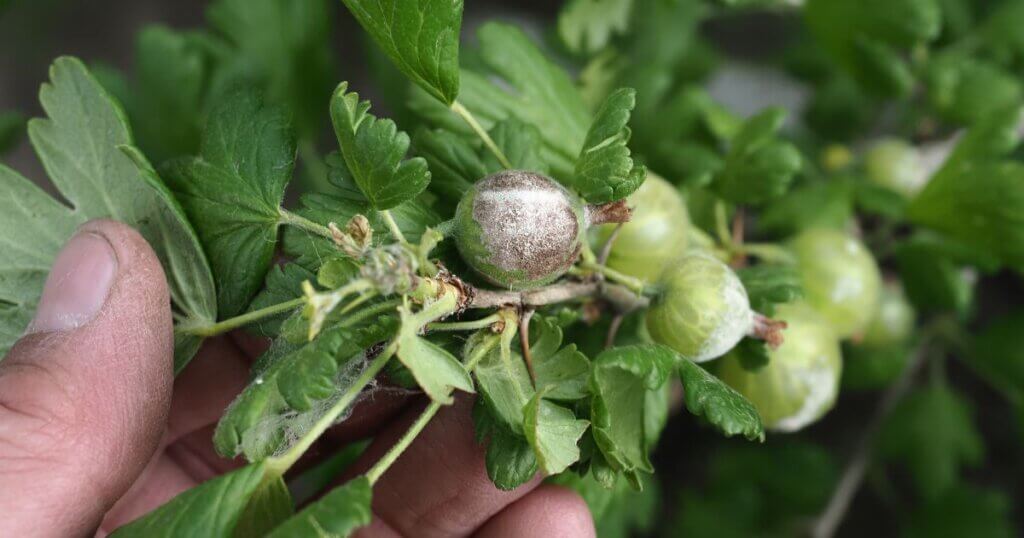Indoor Crop Diseases: Identification, Prevention, and Effective Treatment Strategies

Some of the links in this post are affiliate links. As an Amazon Associate, we earn a referral fee from qualifying purchases—at no extra cost to you.
Crop diseases can be a significant challenge for indoor gardeners. These ailments, caused by pathogens such as fungi, bacteria, and viruses, can wreak havoc on your carefully cultivated plants, leading to stunted growth, reduced yield, and even plant death. To ensure the health and vitality of your indoor crops, it is crucial to identify and treat any signs of disease promptly. This comprehensive guide will explore common indoor crop diseases, their symptoms, and effective treatment strategies to help you safeguard your plants and maximize their productivity.
Table of Contents
Understanding Indoor Crop Diseases
What Are Indoor Crop Diseases?
Indoor crop diseases are ailments that affect plants grown in controlled indoor environments. Due to the limited airflow and confined space, these diseases can spread rapidly and cause severe damage if not addressed promptly. Common pathogens responsible for indoor crop diseases include fungi, bacteria, viruses, and even parasitic nematodes.
The Impact of Indoor Crop Diseases
Crop diseases can have detrimental effects on the overall health and productivity of indoor plants. They can weaken the plant’s immune system, disrupt nutrient absorption, and hinder photosynthesis. As a result, the plants may exhibit stunted growth, yellowing leaves, wilting, necrotic spots, or irregular fruiting. Additionally, crop diseases can diminish the quality and quantity of the harvest, leading to financial losses for indoor gardeners.
Monitoring your plant’s health early helps you detect diseases before they spread. A digital plant monitor checks soil moisture, temperature, light levels, and even soil fertility, giving you real-time data to keep your plants thriving.
Identifying Common Indoor Crop Diseases
1. Powdery Mildew
Powdery mildew is a prevalent fungal disease that affects a wide range of indoor plants. It appears as a white or grey powdery growth on plants’ leaves, stems, and buds. The affected areas may become distorted, turn yellow or brown, and eventually die off. High humidity and poor air circulation create favorable conditions for powdery mildew to thrive.
Garden Safe Fungicide3 Concentrate is a 3-in-1 solution acting as a fungicide, insecticide, and miticide. It’s perfect for controlling powdery mildew and other fungal diseases. Suitable for organic gardening, it protects a wide variety of indoor plants naturally.
2. Botrytis Blight
Botrytis blight, also known as grey mold, is caused by the fungus Botrytis cinerea. This disease typically affects flowers, causing them to develop a greyish-brown fuzzy mold. As the infection progresses, the mold spreads to nearby leaves, stems, and fruits, leading to their decay. Botrytis blight thrives in high humidity and cool temperatures.
Bonide Copper Fungicide uses copper as the active ingredient to help prevent and treat Botrytis blight by stopping fungal spores from germinating. It’s OMRI-listed for organic gardening and safe for many fruits, vegetables, and flowers.
3. Leaf Spot Diseases
Leaf spot diseases encompass a group of fungal and bacterial infections that cause circular or irregular-shaped spots on the leaves. Depending on the specific pathogen, these spots may appear water-soaked, yellow, brown, or black. Leaf spot diseases weaken the plants’ foliage, disrupt photosynthesis, and can spread rapidly in humid conditions.
Southern Ag Liquid Copper Fungicide effectively treats fungal and bacterial leaf spot diseases. It’s versatile for use on fruits, vegetables, and ornamentals, offering broad-spectrum protection.
4. Fusarium Wilt
Fusarium wilt is a soil-borne disease caused by the fungus Fusarium oxysporum. It affects the vascular system of plants, causing wilting, yellowing of leaves, and eventual plant death. Fusarium wilt is difficult to control once established, and infected plants should be removed to prevent further spread.
Actinovate Lawn & Garden Fungicide contains beneficial bacteria that suppress soil-borne diseases like Fusarium wilt. It’s a natural and effective solution safe for use on vegetables, fruits, and ornamentals.
Treating Indoor Crop Diseases
1. Integrated Pest Management (IPM) Approach
Implementing an Integrated Pest Management approach is crucial for effective disease control. This holistic approach focuses on preventive measures such as maintaining proper air circulation, managing humidity levels, practicing good sanitation, and regularly inspecting plants for signs of disease. By minimizing favorable conditions for pathogens, you can significantly reduce the risk of crop diseases.
Sticky Insect Traps are non-toxic yellow sticky traps that help monitor and control flying insect pests, a crucial step in an Integrated Pest Management (IPM) strategy. Easy to use and highly effective in protecting indoor crops.
2. Cultural Control Methods
Cultural control methods involve modifying environmental conditions and cultural practices to discourage the development and spread of crop diseases. Some effective strategies include:
- Proper Plant Spacing: Providing adequate space between plants promotes air circulation, reduces humidity, and minimizes the risk of disease transmission.
- Enhancing Air Circulation. Reduces humidity and prevents the spread of diseases. The VIVOSUN 6-Inch Clip-On Fan can be used for enhancing air circulation. This clip-on fan is adjustable and can be easily attached to various surfaces in your indoor garden.
- Optimal Watering Practices: Overwatering can create favorable conditions for fungal diseases and lead to root diseases. Water plants at the base and avoid wetting the foliage excessively. This cheap Soil Moisture Meter helps you monitor soil moisture levels, ensuring optimal watering practices.
- Regular Sanitation: Remove and dispose of any infected plant material to prevent the disease from spreading. Clean tools, pots, and surfaces regularly to minimize contamination.
High humidity levels promote the growth of powdery mildew, Botrytis blight, and other fungal diseases. The Pro Breeze Mini Dehumidifier helps maintain optimal humidity in your indoor garden, protecting plants from moisture-loving pathogens and supporting better air quality.
Keeping your tools, pots, and growing area sanitized is critical to disease prevention. A Hydrogen Peroxide 3% Spray Bottle is a safe and effective way to disinfect surfaces and equipment without leaving harmful residues behind, making sanitation easy and chemical-free.
3. Biological Controls
Biological controls involve the use of beneficial organisms to combat crop diseases. Some examples include:
- Biofungicides: These are microbial-based products that suppress fungal diseases. They contain beneficial fungi or bacteria that outcompete the pathogens, reducing their impact on plants. This bio fungicide contains beneficial microbes that combat root rot and wilt diseases. It’s suitable for use on seedlings, cuttings, and established plants.
- Beneficial Insects: Predatory insects, such as ladybugs and lacewings, can help control pest populations that contribute to the spread of diseases. Introducing these natural enemies can help maintain a healthy plant environment. Releasing ladybugs into your indoor garden helps control aphids and other soft-bodied insects, reducing the spread of disease. They are a natural and effective biological control method.
Introducing beneficial microbes into your soil improves root health, nutrient uptake, and disease resistance. Big Foot Mycorrhizal Fungi helps plants establish stronger immune systems, naturally reducing susceptibility to soil-borne diseases and boosting overall plant vitality.
4. Chemical Control
Chemical control should be considered as a last resort and used judiciously. If cultural and biological controls prove insufficient, chemical treatments may be necessary. Choosing products labeled for the specific crop and disease is essential, as well as following the instructions carefully and observing appropriate safety precautions. Regularly rotating between different chemical fungicide classes can help prevent resistance development.
Daconil Fungicide Concentrate is a broad-spectrum fungicide that offers powerful protection against a variety of severe fungal infections affecting vegetables, flowers, and shrubs.
When applying chemical treatments, it’s essential to protect yourself properly. The Protective Gardening Gloves & Respirator Set includes durable, chemical-resistant gloves and a lightweight respirator, keeping you safe from exposure while you treat and protect your crops.
Conclusion
Indoor crop diseases can pose significant challenges for indoor gardeners. However, by promptly identifying the signs, implementing preventive measures, and employing appropriate treatment strategies, you can effectively manage and mitigate the impact of crop diseases on your indoor plants. Remember to maintain proper environmental conditions, practice good sanitation, and consider biological controls before resorting to chemical interventions. By taking a proactive approach to disease management, you can ensure your indoor garden’s health, productivity, and longevity.
FAQS – Indoor Crop diseases
1. Can Indoor Crop Diseases Spread to Outdoor Plants?
Many indoor crop diseases can spread to outdoor plants if proper precautions are not taken. Fungal spores, bacteria, and viruses can be carried through air, water, contaminated tools, or human contact. If you move plants between indoor and outdoor environments, ensure proper sanitation and inspect them for any signs of disease before transferring them.
2. How Can I Prevent Indoor Crop Diseases Without Using Chemicals?
Preventing diseases without chemicals involves maintaining a clean growing environment, using disease-resistant plant varieties, practicing crop rotation (if using containers), ensuring proper ventilation, and avoiding overwatering. You can also use natural fungicides such as neem oil, baking soda solutions, or compost teas to help strengthen plant immunity.
3. Are There Any Smart Devices That Help Monitor Indoor Plant Health?
Yes, several smart gardening devices can help monitor indoor plant health. Smart soil sensors can measure moisture, temperature, and pH levels, while automated climate control systems regulate humidity and airflow. Devices like the Xiaomi Smart Plant Monitor or the Parrot Flower Power Sensor provide real-time data to help prevent disease outbreaks.
4. What Are the Best Companion Plants to Reduce the Risk of Indoor Crop Diseases?
Certain plants can naturally deter pests and reduce disease risks when grown together. For example, basil and marigolds emit natural compounds that repel insects, while garlic and chives have antifungal properties that may help prevent fungal infections in susceptible plants. Companion planting is an effective way to promote a healthier indoor gardening environment.
5. Can Hydroponic Systems Reduce the Risk of Indoor Crop Diseases?
Hydroponic systems can help reduce the risk of soil-borne diseases since they eliminate the need for soil, a common host for pathogens. However, hydroponic setups are still susceptible to waterborne diseases, algae growth, and mold if not properly maintained. Regular water filtration, sterilization, and nutrient balance are essential to keeping hydroponic crops disease-free.
Other Useful Resources Related to Indoor Crop Diseases
- Houseplant Diseases & Disorders by Clemson Cooperative Extension: This guide offers detailed insights into common houseplant diseases, their prevention, and treatment methods.
- Pest and Disease Problems of Indoor Plants by Penn State Extension: This resource discusses various pests and diseases affecting indoor plants and provides strategies for prevention and management.
- Diagnosing Houseplant Problems from Diseases by Iowa State University Extension and Outreach: This article focuses on identifying and diagnosing diseases in houseplants, offering guidance on treatment options.
- Plant Diseases: Identification, Treatment & Prevention by The Spruce: This comprehensive guide covers various plant diseases, their symptoms, and effective treatment and prevention strategies.
- Expert Tips For Detecting Pests and Disease in Indoor Farms by Cultivatd: This article provides expert advice on early detection of pests and diseases in indoor farming setups, emphasizing the importance of monitoring and preventive measures.
Some interesting Indoor Crop Disease videos












